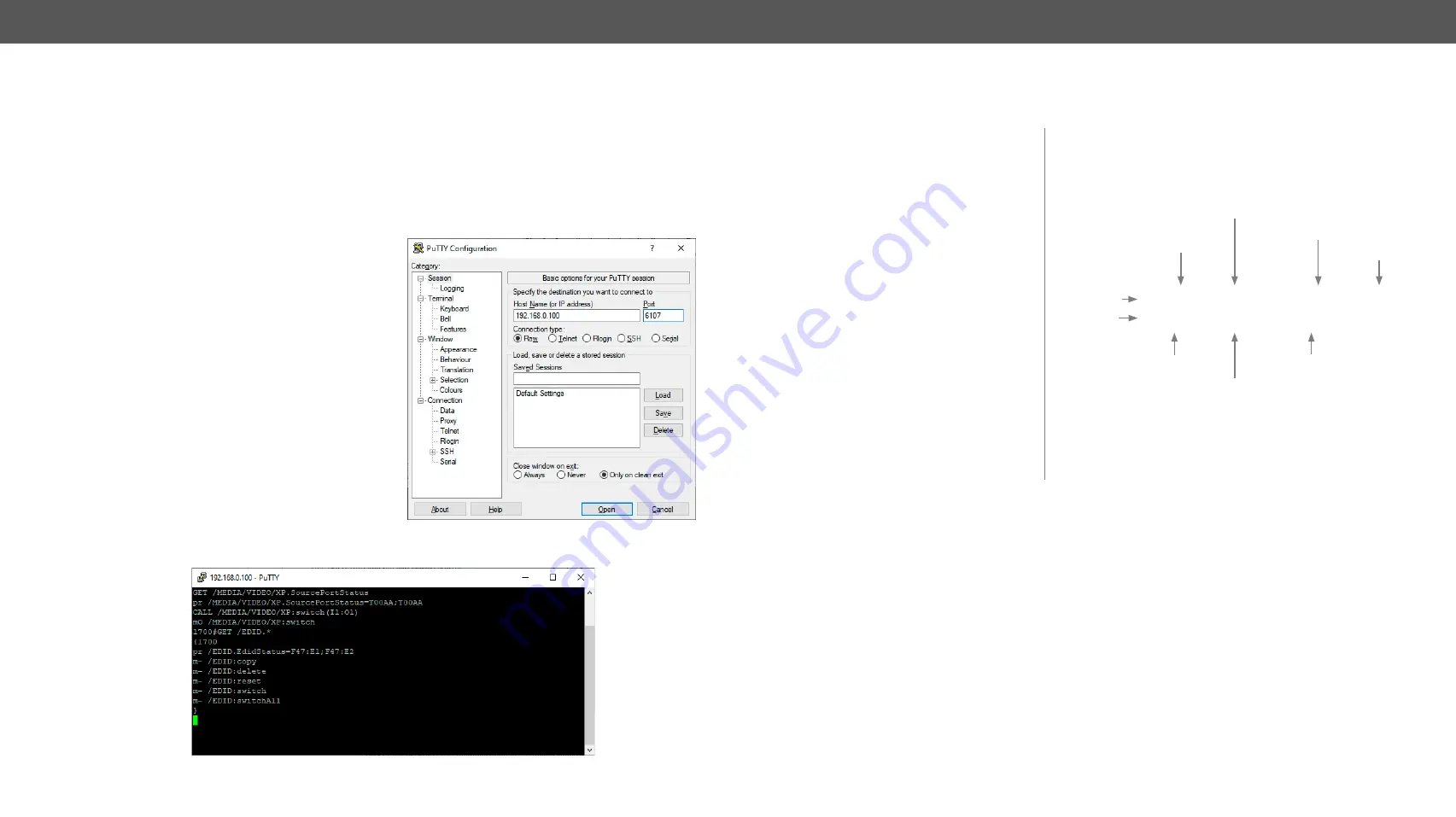
7. LW3 Programmers’ Reference
UMX-HDMI-140 series– User's Manual
73
Applied firmware package: v1.2.0 | LDC software: v2.4.1b7
7.1.
Overview
The Lightware Protocol #3 (LW3) is implemented in almost all new Lightware devices (matrix switchers,
signal extenders and distribution amplifiers) since 2012. The protocol is ASCII-based and all commands
are terminated with a carriage return (Cr, ‘\r’) and line feed (Lf, ‘\n’) pair. It is organized as a tree structure
that provides outstanding flexibility and user-friendly handling with ‘nodes’, ‘properties’ and ‘methods’. The
Advanced View
of the Lightware Device Controller software is the perfect tool for browsing and learning how
the LW3 protocol can be used in practice.
7.2.
Instructions for the Terminal Application Usage
Terminal Application
The LW3 protocol commands can be applied to the
receiver using a terminal application. You need to
install one of them to your control device, for example
Putty
or
CLI
.
Establishing Connection
Follow the steps for establishing connection to the
receiver:
Step 1.
Connect the receiver to a LAN over Ethernet
(see the details in the
section).
Step 2.
Open the terminal application (e.g. Putty).
Step 3.
Add the
IP address
of the device (default:
192.168.0.100) and the
port number (6107)
.
Step 4.
Select the
Raw
connection type, and open the
connection.
Once the terminal window is opened, you can enter the LW3 protocol commands which are listed in the
following sections.
LW3 protocol command communication in a terminal window
7.3.
Protocol Rules
7.3.1.
LW3 Tree Structure and Command Structure (examples)
7.3.2.
General Rules
▪
All names and parameters are
case-sensitive
.
▪
The nodes are separated by a slash (‘/’) character.
▪
The node name can contain the elements of the English alphabet and numbers.
▪
Use the
TCP
port no. 6107
when using LW3 protocol over Ethernet.
▪
When a command is issued by the device, the received response cannot be processed by the CPU.
▪
The node paths describe the exact location of the node, listing each parent node up to the root.
ç
CALL /MEDIA/VIDEO/XP:switch(I1:O1)
æ
mO /MEDIA/VIDEO/XP:switch
Command type
(GET/SET/CALL/MAN)
Prefix of the response
Path of the method/property
Path of the method/property
Method/property
Method/property
Parameters
Command
Response
/
MEDIA
VIDEO
XP
SourcePortCount
SourcePortStatus
[...]
I1
I2
I3
I4
I5
I6
O1
AUDIO
UART
IR
GPIO
ETHERNET
CEC
EDID
SYS
EVENTS
PRESETS
MANAGEMENT
[...]






























